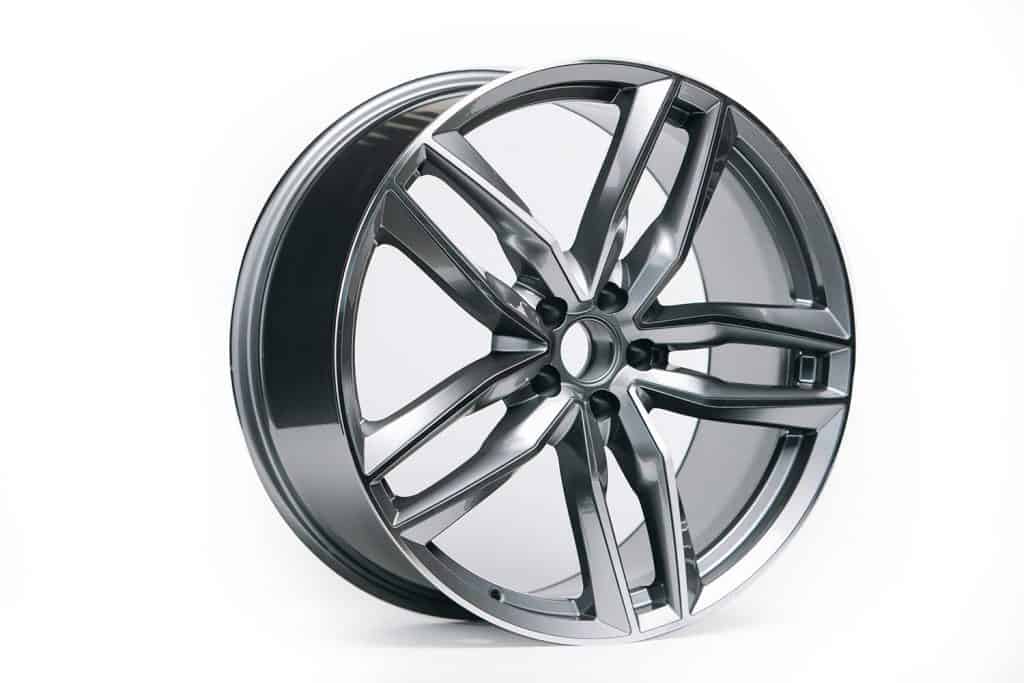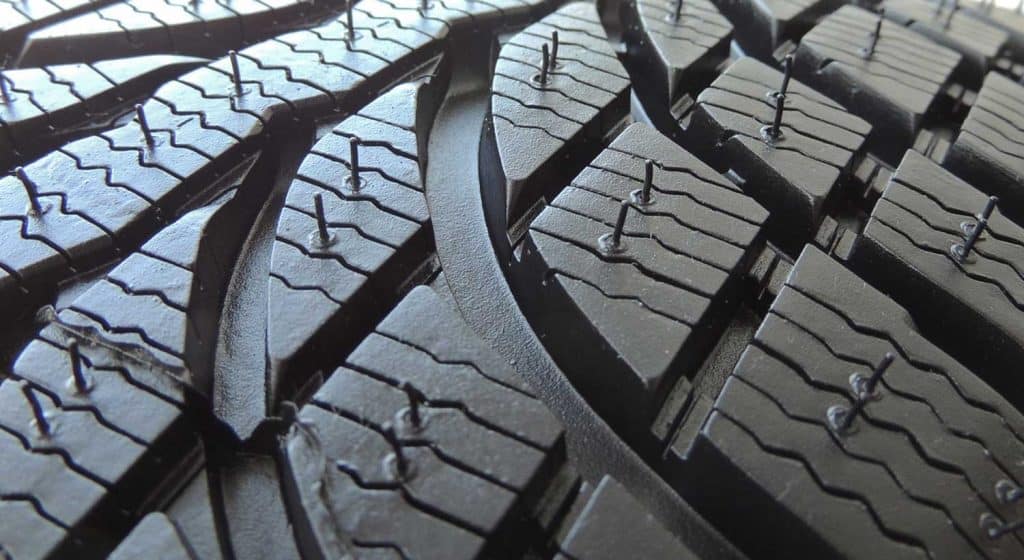Whether your current tires are worn or you would like to upgrade, choosing the right tire can be a tricky process. There are so many sizes and widths available. How do you know what tire width to choose for your vehicle type? Does the width of the tires make a difference? We have done the research and can help you in the decision-making process of purchasing the right tires for your vehicle.
The average tire width varies based on the vehicle type. Here is a list showing the average tire width for five types of passenger vehicles:
- Compact to Mid-Size Cars — between 205 and 225 mm
- Mid-size SUVs — between 225 and 245 mm
- Minivans — between 225 and 235 mm
- Light-duty Trucks — between 255 and 275 mm
- Heavy-duty Trucks — between 250 and 275 mm
Now that you know the average tire width for various vehicle types, let's look more in-depth at how to find the perfect size tire for your vehicle. Understanding what the various numbers and letters on the tire mean will help in this decision. We will also explore if the size and width of a tire really matter. Let's get rolling!
![A rack with variety of new car tires in automobile store, How Wide Are Tires On Average? [By Type Of Vehicle]](https://vehq.com/wp-content/uploads/2021/10/How-Wide-Are-Tires-On-Average-683x1024.png)
How to Determine Tire Size
There are several locations you can look to find the suggested tire size for your particular vehicle. Those locations include your driver's manual, the inside frame of the driver's side door, inside the glove box door, or your current tire's sidewall.
A tire size calculator may also help you decide if you've selected the right tire for your vehicle. If you are unsure as to how to translate all of those numbers and letters into something meaningful, let's examine their meaning.
Service or Vehicle Type
There are three common prefixes you will find in this location:
- P = Passenger Vehicle
- T = Temporary Spare
- LT = Light Truck
Most vehicles will have "P" as their prefix. "LT" tires are used on vehicles made for hauling larger loads such as 3/4-ton pickup trucks, work vans, or work trucks.
What Do the 3 Numbers on Tire Width Mean?
The three numbers immediately following the prefix will indicate the width of the tire. Tire width is measured using the metric system and shown in millimeters.
Tire width refers to the measurement from one sidewall to the other when mounted properly on the tire rim. Tires for passenger vehicles can range from 175 to 275 mm.
Aspect Ratio
This ratio is the height of the tire's cross-section to its width. This essentially helps you identify the height of your tire's profile.
Aspect ratios are given in percentages. Based on the tire in our above image, its aspect ratio would be 55%, meaning the height is equal to 55% of its width. The larger the sidewall, the larger the aspect ratio.
Construction
The letter "R" will be the most common type of construction seen here. This means the tires are radial. Radial construction means the layers run in a radial direction.
Essentially, the tire's internal ply cords run perpendicular to the tire's rotation. Occasionally, you may see a "D" referring to diagonal, now only used on some trucks and trailers.
Rim Diameter
This number indicates the size of the rim the tire is intended to fit. This measurement is given in inches. Our diagram above shows the rim size would be 16 inches. Rim sizes can vary between 15 and 20 inches on most passenger vehicles.

Load Index
A tire's load index correlates to the load-carrying capacity when it is properly inflated. Basically, it tells you how much weight in pounds your tire can support.
The following chart shows a load index number and corresponding load. The tire in our example has a load index of 91, which means each tire can support 1,356 pounds. The car could support a total of 5,424 pounds (1,356 x 4 tires = 5,424).
Speed Rating
The speed rating is the final figure on the tire. This letter corresponds to the maximum speed capability of a tire. However, this isn't a recommended speed.
We caution you to always follow the speed limit. The following chart shows you the speed rating and corresponding speed. The speed rating on our tire diagram above is "S." According to the chart, this tire is rated for up to 112 mph.
Does Tire Size Matter?
Tire size definitely matters! Not only does it change the cosmetic appearance of your vehicle, but can also affect performance.
Wider tires are also becoming a trend in the auto industry. Take a look at some of the advantages and disadvantages of wider tires as we delve further into sizing below.
What is Considered A Wide Tire?
A wide tire is considered as any tire wider than the factory tire included with your vehicle. As mentioned earlier, you can find this recommended size in various locations of your vehicle.
Can You Increase Tire Width?
It is possible to increase the tire width on your vehicle's tires. In doing so, safety considerations must be taken. As a general rule, it is safe to increase the tire width by 20 mm, or 5 to 10% more than the original tire width.
Considering the width of your rims is also important when increasing the width of your vehicle's tire. Increasing tire width too much can cause the tire to rub on the fender or can result in improper tire wear. This can cause unsafe driving conditions.
Advantages of Wider Tires
There are some advantages to upgrading to wider tires. They can have a large impact on the performance of your vehicle. Depending on what you are trying to achieve, wider tires may be a good choice.
Do They Provide Better Traction?
Having a wider contact area with the road is one way to improve the traction of your car. On the other hand, skinnier tires have more pressure per square inch, also increasing traction.
In this category, wider and narrow tires can both provide better traction. Consider the types of roads, terrain, and driving conditions you will be navigating when making this decision.
Are Wide Tires Bad in Rain?
Actually, wider tires are better for driving in rainy, wet conditions. The small slits seen on the tire's tread are known as sipes. The surface area of a wider tire is larger, thus resulting in more sipes.
These sipes work by helping trap and remove water from the contact surface. Narrow tires also have sipes, but because they are smaller, there are fewer of them.

Can Wider Tires Brake Better?
Having a wider tire will increase the contact area of your tire to the pavement. This also increases the amount of grip, causing your vehicle to increase brake speed.
Is Cornering Improved With Wider Tires?
Wider tires have better thread and stiffer sidewalls, resulting in easier handling or cornering. As discussed earlier, more contact area is present with wider tires, also aiding in better handling.
Disadvantages of Wider Tires
While there are several advantages to buying wider tires, there are also some disadvantages. Being aware of the disadvantages of wider tires may end up changing your mind about purchasing a wider tire.
Do Wider Tires Affect Gas Mileage?
More friction is generated from wider tires, thus resulting in greater fuel consumption. The less friction your car produces, the less steering effort is needed allowing less fuel use.
Larger and wider tires are heavier and less aerodynamic, which causes the engine to work harder. This will also increase the vehicle's fuel consumption and negatively affect your wallet.

Do Wider Tires Ride Better?
If you want a nice smooth ride, wider and bigger tires may not be for you. In most cases, larger tires result in rougher riding conditions. Due to wider tire size, road noise may also be increased.
Are Wider Tires More Expensive?
Most likely, you will pay more for a wider tire. Because the tire is larger, it is going to cost more to make. Wider tires are not as easily found on the market as your standard tires, resulting in higher prices. Having wider tires installed may also cost more.
In Closing
In most circumstances, it is best to operate your vehicle with the same sized tires that it came equipped with. After all, it came equipped with those tires to ensure maximum safety and optimum performance. Many factors should be considered when choosing tire size.
Upgrading tire size can be a costly investment, and ultimately, the decision comes down to what you are trying to accomplish. Whether it is for cosmetic or performance purposes, wider tires come with advantages and disadvantages.
If you would like more information on tire performance, click on one of the following links:
